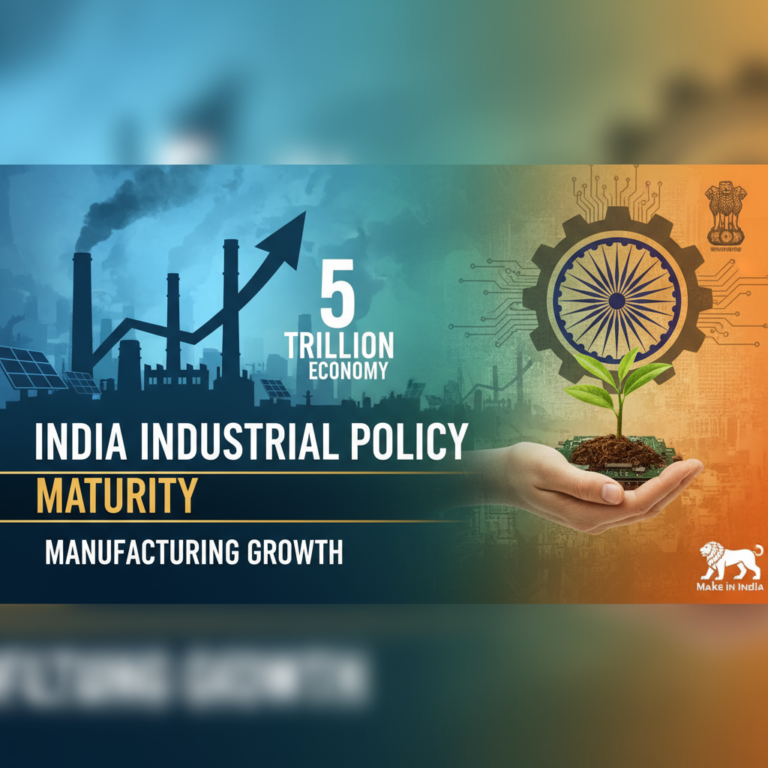Introduction: When Tweets Rocked the Markets
Stock markets across the globe are often described as “barometers of economic health.” But sometimes, they react not to domestic numbers, but to a single political decision made thousands of miles away. That’s exactly what happened when former U.S. President Donald Trump announced a 25% tariff on Indian exports.
The result? Panic. Within hours of the tariff announcement taking effect, Sensex fell by 693 points to 80,093, and Nifty slid over 200 points to 24,511. The fall wasn’t just about numbers on a screen — it reflected fears about global trade, export losses, and investor confidence.
But why did this happen? How deep is the impact? And more importantly, what should investors do in such turbulent times? Let’s break it down.
What Are Tariffs and Why Do They Matter?
A tariff is essentially a tax imposed on imports or exports between countries. Governments use tariffs to:
- Protect domestic industries
- Balance trade deficits
- Exert political pressure
When Trump levied a 25% tariff on Indian exports, the intention was to push U.S. buyers to choose domestic products instead of cheaper imports from India. While it may have made sense politically in Washington, it sent shockwaves to businesses in Mumbai, Delhi, and beyond.
Why Did Sensex and Nifty Crash?
The Sensex (BSE’s top 30 companies) and the Nifty (NSE’s top 50 companies) represent India’s largest corporations. When tariffs threaten export revenues, these companies see:
- Lower projected earnings
- Reduced global competitiveness
- Investor panic selling
The ripple effect spread quickly:
- Export-heavy industries like IT, textiles, and pharmaceuticals saw sharp declines.
- Foreign investors began pulling out money fearing instability.
- Retail investors followed suit, amplifying the fall.
Historical Echoes: Trade Wars and Market Meltdowns
This wasn’t the first time tariffs rattled markets. A few parallels:
- 1930s Great Depression: U.S. Smoot-Hawley Tariff worsened global trade collapse.
- 2018 U.S.-China Trade War: Markets from Shanghai to New York plunged repeatedly on tariff news.
- India’s Past: In 2019, U.S. withdrawal of India’s GSP (Generalized System of Preferences) led to uncertainty for exporters.
Each time, the lesson has been the same: markets hate unpredictability.
Rare Insights: Who Gets Hurt the Most?
While the headlines highlight Sensex and Nifty, the real pressure falls on:
- Small & Medium Exporters: Textile factories in Surat or handicraft units in Jaipur lose U.S. buyers.
- Shipping & Logistics Firms: Fewer exports mean fewer shipments.
- Farmers: Agricultural products face tariff barriers too.
- Currency Exchange Markets: Pressure on the rupee as trade balance worsens.
Interestingly, domestic-focused companies (like FMCG and telecom) remain relatively insulated — a fact smart investors often capitalize on.
Investor Psychology During Tariff Shocks
Markets are driven less by numbers and more by emotions:
- Fear: “Will exports collapse? Should I sell?”
- Herd Mentality: If everyone’s selling, people rush to sell too.
- Short-Term Panic vs Long-Term Patience: Veteran investors often see tariff-induced crashes as buying opportunities.
Warren Buffett’s words resonate here: “Be fearful when others are greedy, and greedy when others are fearful.”
Short-Term vs Long-Term Impact
- Short-Term: High volatility, heavy selling, and market corrections.
- Long-Term:
- Indian companies may diversify export markets.
- New trade alliances may open doors (e.g., Europe, Southeast Asia).
- Resilient firms bounce back stronger.
Global Investor Reactions
Foreign institutional investors (FIIs) watch Indian markets closely. When tariffs hit, FIIs often withdraw funds to protect portfolios. This creates:
- Immediate liquidity crunch.
- Increased pressure on the rupee.
- Domino effect across emerging markets.
Yet, seasoned FIIs often return once the dust settles, buying undervalued Indian stocks at lower prices.
Lessons for Businesses & Investors
- For Businesses: Diversify markets, reduce overdependence on the U.S., innovate to add value.
- For Investors: Don’t panic sell. Study which sectors are truly hurt vs which are only reacting temporarily.
How to Start Investing in Stocks in India
Many new investors wonder — should I even enter the stock market during such chaos? The answer is yes, but wisely.
Step-by-Step Beginner’s Guide:
- Learn Basics: Understand stocks, Sensex, and Nifty.
- Choose a Broker: Pick a SEBI-registered platform like Zerodha, Upstox, or Groww.
- Open a Demat & Trading Account.
- Start Small: Invest amounts you can afford to hold long-term.
- Diversify: Don’t put all money in one stock or sector.
- Use SIPs (Systematic Investment Plans) for steady investing.
- Stay Updated: Follow financial news but avoid panic trading.
Table: Popular Indian Broker Platforms
| Broker Platform | Account Opening Charges | Brokerage Fees | Best For |
|---|---|---|---|
| Zerodha | ₹200 | ₹20 per trade | Beginners & traders |
| Groww | Free | Zero delivery, ₹20 intraday | First-time investors |
| Upstox | ₹249 | ₹20 per trade | Active traders |
| ICICI Direct | ₹0–₹975 (plans vary) | 0.55% delivery | Full-service investors |
| Angel One | Free | ₹20 per trade | Discount + advisory |
FAQs (15 Questions with Answers)
1. Why did Trump impose tariffs on India?
To reduce U.S. trade deficits and protect domestic industries.
2. How much tariff was imposed?
A 25% tariff on Indian exports.
3. Which sectors are most affected?
Textiles, IT services, pharmaceuticals, and agriculture.
4. Why did Sensex and Nifty fall so sharply?
Because investors feared reduced corporate profits and global instability.
5. Are tariffs permanent?
Not always — they may be renegotiated or reversed.
6. Do tariffs only hurt exporters?
No, they also impact shipping, logistics, and even farmers.
7. How do tariffs affect the rupee?
They worsen trade balance, putting pressure on currency value.
8. Should I sell my stocks during tariff shocks?
Not necessarily. Panic selling often leads to losses.
9. Which stocks survive tariff wars better?
Domestic-focused companies like FMCG, telecom, and retail.
10. Can tariffs create opportunities?
Yes, undervalued stocks become cheaper to buy.
11. How can beginners protect themselves?
By diversifying and avoiding short-term speculation.
12. Do foreign investors pull out during tariff wars?
Often yes, but many return once stability is restored.
13. What is the historical lesson from tariffs?
Markets hate uncertainty; diversification is key.
14. Can India find alternative markets?
Yes — Europe, Africa, and ASEAN nations are growing trade partners.
15. Will Indian stock markets recover?
Yes, history shows markets bounce back stronger after shocks.
Conclusion: Chaos or Opportunity?
Trump’s tariffs shook Indian stock markets, but this isn’t the first time global politics influenced Dalal Street. While exporters and investors felt the pinch, history shows that markets eventually stabilize and even reward patient investors.
The key lies in perspective:
- Panic selling leads to regret.
- Strategic investing leads to wealth.
For businesses, the message is to diversify beyond one market. For investors, it’s to keep calm, study fundamentals, and embrace volatility as a chance to buy into India’s long-term growth story.












+ There are no comments
Add yours